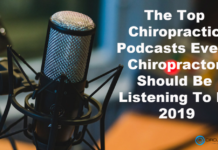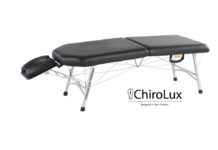Written By; Christopher Kent DC, ESQ
“If one wished to kill a profession, to remove its cohesion and its strength, the most effective way would be to forbid the use of its characteristic language.” – Kenneth Hudson (1978) The Jargon of Professions
A position paper has been produced by a group of six European chiropractic programs which states, in part:
“The teaching of vertebral subluxation complex as a vitalistic construct that claims that it is the cause of disease is unsupported by evidence. Its inclusion in a modern chiropractic curriculum in anything other than an historical context is therefore inappropriate and unnecessary.” (1)
This follows a similar statement issued by the General Chiropractic Council on the United Kingdom. (2) Both statements are the latest manifestations of a growing movement of subluxation denialism. Logical fallacies and inherent contradictions are the currency used to propagate these positions. In a previous article, (3) I posed several questions: why would a faction in the profession seek to ignore or trivialize the tremendous profession-wide support that exists for the term, its acceptance by those outside the profession, peer-reviewed publications, internationally accepted guidelines, and books from major medical publishers? Why are unsubstantiated claims and logical fallacies regarding subluxation terminology uncritically accepted? Perhaps the answer lies in the phenomenon of denialism.
A Wikipedia article defines denialism as choosing to deny reality as a way to avoid an uncomfortable truth. (4) Author Paul O’Shea remarks, “[It] is the refusal to accept an empirically verifiable reality. It is an essentially irrational action that withholds validation of a historical experience or event.” (5) Anthropologist Didier Fassin distinguishes between denial, defined as “the empirical observation that reality and truth are being denied,” and denialism, which he defines as “an ideological position whereby one systematically reacts by refusing reality and truth.”(6)
The Wikipedia entry notes that “individuals or groups who reject propositions on which a scientific or scholarly consensus exists can engage in denialism when they use rhetorical tactics to give the appearance of argument or legitimate debate, when in actuality there is none.” (7)
Adjustment vs. Manipulation

A disturbing trend is the willingness of some chiropractic academicians and researchers to abandon chiropractic terminology as well as chiropractic analytical strategies. The generic moniker “spinal manipulation” or “spinal manipulative therapy” is becoming a replacement for the term “chiropractic adjustment.” What’s wrong with that? They aren’t the same thing! There are techniques of chiropractic adjustment, such as basic, Grostic, etc. that simply do not fall under the medical definition of “manipulation.”
A popular definition of “manipulation” is “a manual procedure that involves a directed thrust to move a joint past the physiological range of motion, without exceeding the anatomical limit.” (8) The neurological implications of vertebral subluxation correction are not addressed in this definition. One chiropractic researcher has actually written, “An adjustment is often referred to as a ‘spinal manipulation’ in the research literature.” (9)
A grave error is also made in many studies of the effects of “manipulation” by lumping together all “hands on” techniques, while failing to address key issues, such as the examination criteria used to determine the presence of “manipulable lesions,” and how the investigators determine that the “manipulative treatment” was successful.
Use of imprecise, common domain terms fails to effectively differentiate chiropractic interventions from those of other professions. “Spinal manipulation has become increasingly popular among different disciplines including chiropractic, physiotherapy, manual therapy, and nursing…Furthermore, the global scenario of evidence is generally lacking, limited, or conflicting.” (10)
Would it not be absurd for medicine to test the efficacy of drug therapy for a given disease without defining the diagnostic criteria for the disease and specifying which drug is given and at which dosage? It is no less absurd to collectively refer to all chiropractic adjusting techniques as “manipulative treatments” without defining the technique used, the force applied, the direction of the force, and the criteria for pre- and post-adjustment analysis.
Semantic Baggage
The terminology recommended by subluxation denialists carries semantic baggage. Although the medical definition of “manipulate” differs from the general definition, the connection made in the minds of the laity and other professionals may be negative.
Definitions of MANIPULATE
- to control or take advantage of by artful, unfair, or insidious means <the con man would slyly manipulate the emotions of his marks in order to win their sympathy and trust>
Synonyms exploit, play (upon)
Related Words engineer, finagle, jockey, maneuver; beguile, bluff, cozen, deceive, delude, dupe, fool, gull, hoax, hoodwink, kid, shanghai, snow, take in, trick; intrigue, machinate, plot, scheme; arrange, contrive, devise, finesse, mastermind; cheat, chisel, con, defraud, fleece, gyp, hustle, swindle (11)
Medical dictionary:
1: to treat or operate with the hands or by mechanical means especially in a skillful manner <manipulate the fragments of a broken bone into correct position>
2a : to manage or utilize skillfully
b : to control or play upon by artful, unfair, or insidious means especially to one’s own advantage (12)
Definition of ADJUST
to change (something) so as to make it suitable for a new use or situation <after going on the night shift, he found it difficult to adjust his sleep schedule> <adjust the amount of sugar in the recipe to your taste>
Synonyms acclimate, acclimatize, accommodate, adjust, condition, conform, doctor, edit, fashion, fit, put, shape, suit, tailor
Related Words readapt, readjust; customize, gear, match, model, pattern; attune, correct, harmonize, square, tune; establish, root, settle; acquaint, familiarize, orient, orientate; equip, prepare, prime, rehearse; harden, inure, season, toughen; alter, convert, make over, modify, recast, reclaim, recycle, redesign, redevelop, redo, reengineer, refashion, refigure, refit, refocus, reinvent, rejigger, remake, remodel, revamp, revise, rework, transform; accustom, condition, habilitate, habituate, naturalize; ready, season; bend; fiddle (with), fine-tune, phase, register, regulate, rig
to bring about orientation or adaptation of (oneself)
intransitive verb
1: to adapt oneself (as to climate, food, or new working hours)
2: to achieve mental and behavioral balance between one’s own needs and the demands of others (12, 13)
Role of Language: Differentiation vs. Homogenization
An important function of language is differentiation. Language should be a tool for minimizing ambiguity, and establishing precision in communication. This necessitates the use of terminology that communicates the uniqueness of the thing being described. The use of terms that homogenize rather than differentiate foster ambiguity and imprecision.
 One example is the suggestion that the terms vertebral subluxation, joint fixation, joint dysfunction are interchangeable. They are not the same thing. There are significant operational and epistemological differences. Implicit in the term vertebral subluxation are both biomechanical and neurological elements. Vertebral subluxation is a relational neurological process that impacts the human experience, not merely a fixated joint. A fixated or tender joint might represent one manifestation of vertebral subluxation, not a synonym for vertebral subluxation. The notion that they are the same leads to confusion and ambiguity—a denialist’s best friends.
One example is the suggestion that the terms vertebral subluxation, joint fixation, joint dysfunction are interchangeable. They are not the same thing. There are significant operational and epistemological differences. Implicit in the term vertebral subluxation are both biomechanical and neurological elements. Vertebral subluxation is a relational neurological process that impacts the human experience, not merely a fixated joint. A fixated or tender joint might represent one manifestation of vertebral subluxation, not a synonym for vertebral subluxation. The notion that they are the same leads to confusion and ambiguity—a denialist’s best friends.
Research designs based upon the haphazard application of ill-defined interventions selected by utilizing examination procedures whose reliability has not been established cannot be considered “scientific.” What fruit has been borne by the allopathic research programs currently underway? The aberrant perception by students and some chiropractors that chiropractic is a subset of medicine, and that adjusting is a subset of manipulation? The perception that chiropractic care is temporary analgesia at best, and placebo therapy at worst?
A pernicious consequence of failing to use chiropractic terms, such as subluxation and adjustment in article titles, abstracts, and key words is that when a scholar, journalist, researcher, or lay person searches databases for these words, the papers purporting to support subluxation will not show up as “hits.” One researcher has stated that she uses terms such as manipulation and joint fixation because subluxation and adjustment are not MESH terms. Therefore, some purportedly “high impact” journals will not allow them as key words. The fix is simple: include them in the title and abstract. Failure to do so will result in “no impact” when the papers cannot be found when searching using chiropractic terms. Rest assured denialists know this. Search PubMed using the terms “chiropractic” and “subluxation.” Up will pop denialist opinion pieces. Conspicuously absent will be papers purportedly supportive of subluxation, but use terms such as manipulation or joint fixation.
The value of chiropractic research lies in its potential to improve our clinical strategies, and to provide us with a scientifically sound basis for making claims to the public and the scientific community. We cannot dismiss meaningful differences in culture and objectives as “just words.”
 Christopher Kent is a chiropractor and an attorney. He is the owner of On Purpose, LLC, and president of the Foundation for Vertebral Subluxation. A 1973 graduate of Palmer College of Chiropractic, he is a Diplomate and Fellow of the ICA College of Chiropractic Imaging. Dr. Kent is known within the chiropractic profession for his dedication to integrating the science, art, and philosophy of chiropractic for doctors and students of chiropractic. He was awarded Life University’s first Lifetime Achievement Award in 2007. Dr. Kent is former chair of the United Nations NGO Health Committee, the first chiropractor elected to that office.
Christopher Kent is a chiropractor and an attorney. He is the owner of On Purpose, LLC, and president of the Foundation for Vertebral Subluxation. A 1973 graduate of Palmer College of Chiropractic, he is a Diplomate and Fellow of the ICA College of Chiropractic Imaging. Dr. Kent is known within the chiropractic profession for his dedication to integrating the science, art, and philosophy of chiropractic for doctors and students of chiropractic. He was awarded Life University’s first Lifetime Achievement Award in 2007. Dr. Kent is former chair of the United Nations NGO Health Committee, the first chiropractor elected to that office.
To learn more about the On Purpose program and what it can do for you, visit http://www.chiroonpurpose.com. For information concerning the online Advanced Subluxation Training course, visit http://www.claast.com.
References
- Clinical and Professional Chiropractic Education: a Position Statement. Société Scientifique dédiée à la Chiropraxie. May 15, 2015. http://vertebre.com/charte-pour-l-education-chiropratique-en-europe-8163
- Kent C: An Analysis of the General Chiropractic Council’s Policy on Claims Made for the Vertebral Subluxation Complex. Foundation for Vertebral Subluxation. www.mccoypress.net/subluxation/docs/kent_gcc_subluxation_analysis.pdf
- Kent C: Denialism and Our Responsibility to Address the Vertebral Subluxation http://www.dynamicchiropractic.com/mpacms/dc/column.php?c_id=1911
- Maslin J. “Michael Specter Fires Bullets of Data at Cozy Antiscience in ‘Denialism’.” The New York Times, Nov. 4, 2009. Cited in Wikipedia. http://en.wikipedia.org/wiki/Denialism
- O’Shea P. A Cross Too Heavy: Eugenio Pacelli, Politics and the Jews of Europe 1917-1943. Rosenberg Publishing, 2008.
- Fassin D. When Bodies Remember: Experiences and Politics of AIDS in South Africa. Volume 15 of California Series in Public Anthropology, University of California Press, 2007.
- McKee M, Diethelm PA. How the growth of denialism undermines public health. Brit Med J, 2010;341:1309-1311. http://www.ncbi.nlm.nih.gov/pubmed/?term=21156741
- Bartol KM: Osseous manual thrust techniques. In: Gatterman MI: Foundations of Chiropractic. Subluxation. Mosby. St. Louis. 1995.
- Haavik H: The Reality Check. 2014.
- Gianola S, Cattrysse E, Provyn S, Van Roy P: Reproducibility of the Kinematics in Rotational High-Velocity, Low-Amplitude Thrust of the Upper Cervical Spine: A Cadaveric Study. Journal of Manipulative and Physiological Therapeutics 2015 Volume 38 Number 1. http://www.jmptonline.org/article/S0161-4754(14)00215-2/fulltext
- Merriam-Webster Thesaurus. http://www.merriam-webster.com/thesaurus/manipulate
- Merriam-Webster Medical Dictionary. http://www.merriam-webster.com/medical/manipulate
- Merriam-Webster Thesaurus. http://www.merriam-webster.com/thesaurus/adjust
- Merriam-Webster Medical Dictionary. http://www.merriam-webster.com/medical/adjust







